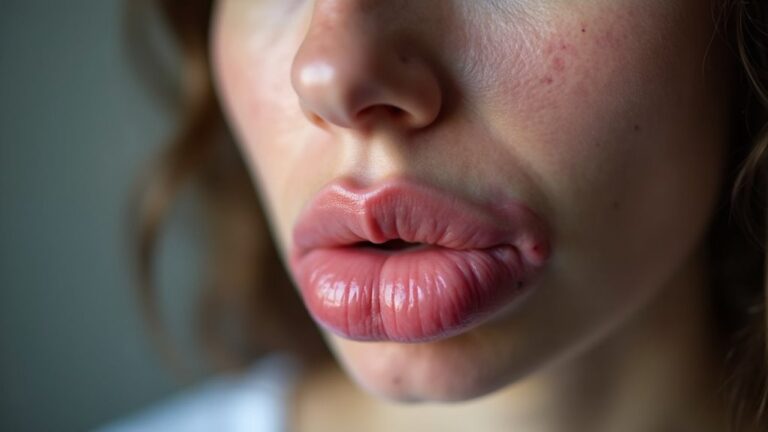Dimethyltryptamine (DMT), a powerful psychedelic compound, could provide insights about the secrets of sleep and dreaming. Some researchers believe the brain produces small amounts of DMT naturally, possibly influencing REM sleep—the stage where vivid dreams occur. The similarities between DMT trips and intense dream experiences raise intriguing questions about how the mind constructs reality during altered states. Could comprehending this connection unlock new ways to investigate consciousness or even treat sleep disorders? The answers might lie where science and creativity meet.
The Science Behind DMT and Sleep
The pineal gland, a tiny structure deep in the brain, plays a key role in regulating sleep via producing melatonin—but some researchers believe it could also make DMT, a compound linked to vivid dream states.
While melatonin guides sleep cycles, trace amounts of endogenous DMT have been found in the brain, hinting at a possible connection between this chemical and dreaming. During REM sleep, as dreams are most intense, some scientists speculate DMT levels could rise, influencing the surreal imagery and emotions experienced.
A few studies suggest low doses of DMT might even trigger lucid dreaming, where people become aware they’re dreaming while still asleep. Though unproven, these ideas propose that the pineal gland may shape not just sleep, but also altered states of consciousness during dreams.
DMT and REM Sleep: Parallels in Brain Activity
Could the brain’s activity during REM sleep emulate the effects of a powerful psychedelic? Research indicates striking similarities between the vivid, altered state of consciousness induced by DMT and the brain activity observed during REM sleep. Both states involve rapid onset of intense sensory experiences, with dreams often resembling DMT’s hallucinatory effects.
Studies propose that DMT, a naturally occurring neurotransmitter, can play a role in generating dream content by facilitating neural communication during REM. Fluctuations in DMT levels throughout sleep, particularly during REM phases, further support this connection. The parallels between these states raise intriguing questions about whether endogenous DMT helps create the neurochemical conditions necessary for dreaming, blending waking reality with the surreal landscapes of sleep.
DMT and Lucid Dreaming: Shared Characteristics
Research on DMT and REM sleep highlights how closely psychedelic experiences mirror the dream world, but the similarities don’t stop there. Both cognizant dreaming and DMT trips involve a shift in human consciousness, where perception becomes hyper-vivid and reality bends in unexpected ways.
Neuroscience suggests DMT’s hallucinogenic effects may activate brain regions similar to those active during cognizant dreaming, creating vivid dreams with intense visuals and a sense of control. Users report feeling fully aware while navigating dreamscapes or psychedelic realms, as if their minds unlock new layers of awareness.
The overlap hints at a shared mechanism—perhaps DMT temporarily mimics the brain chemistry of cognizant dreaming. Exploring this connection could deepen knowledge of how consciousness shapes reality in waking and dreaming states.
DMT, Sleep, and Near-Death Experiences
Many people who’ve had near-death experiences describe visions strikingly similar to DMT trips—otherworldly encounters, overwhelming light, and a sense of leaving the body behind. Researchers speculate that extreme stress or oxygen deprivation might trigger a surge of endogenous DMT, shaping these vivid mental experiences.
The parallels between DMT-induced altered states and near-death recollections suggest shared neural pathways, offering insights about human perception and consciousness boundaries. While some propose therapeutic applications for DMT in comprehending trauma or end-of-life anxiety, ethical questions remain.
Whether released during sleep, dreams, or near-death moments, DMT’s role in reshaping reality highlights how fragile yet adaptable the mind can be when faced with extraordinary circumstances.
Therapeutic Potential and Considerations for DMT in Sleep Research
Exploring DMT’s potential to improve sleep disorders provides access to groundbreaking treatments, but it also demands careful navigation of risks and regulations. Researchers investigate how DMT may help with insomnia, sleep apnea, and REM disorders, as its effects on perception and dreaming could grant new therapies. However, its use requires careful oversight to safeguard well-being and responsible use in sleep research. Regulatory hurdles must be addressed to advance studies while prioritizing safety.
| Potential Benefits | Key Considerations |
|---|---|
| Could regulate sleep cycles | Requires strict regulation |
| May enhance dream clarity | Dangers of misuse or overuse |
| Might address REM disorders | Legal barriers in many regions |
| Promotes deeper sleep study | Needs more clinical trials |
Balancing therapeutic potential with caution remains essential for progress in this field.
Conclusion
Research hints that DMT can shape dreams, blurring the line between sleep and psychedelic states. It sparks curiosity, challenges assumptions, and opens portals to new treatments.





